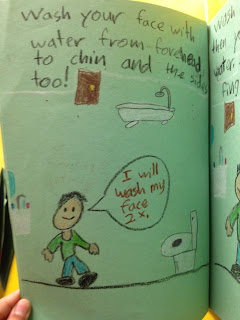The tragedy of Karbala is a huge part of our faith. Sometimes it can be challenging to teach this to younger kids in a way that will resonate with them, and come up with activities and projects.
Here are some resources that I have used:
For the first days of Muharram, I went through stories with my children, like a mini-majlis, each day emphasizing on one or two of the heroes of Karbala. The resource above was great because it told the story in a couple pages of some of these people.
Muslim ibn Aqeel:
Mokhtarname (The Mukhtar Narrative), which is currently available on YouTube and
http://www.shiasource.com/, has a very nice visual of Hazrat Muslim ibn Aqeel's story. You can show the part where Muslim is walking toward the court of ibn Ziyad and is slowly deserted by the people of Kufa (episode 7, about 48:05), up until the part where he fights the enemies (episode 8, about 12:40). I skip some parts in between, and also do not show his actual death.
Bibi Zainab's speech in the court of Yazid:
This clip does the job in giving a visual of Bibi Zainab and Imam Sajjad (AS)'s speech in Damascus.
http://www.youtube.com/watch?v=EvdpPggY04M&feature=player_embedded (starts at about 1:27). With the movie clips, the subtitles went too quickly for younger kids, so I dubbed. For older kids, this would be okay.
Other resources/activities:
*
Crossword: Easy to make on
http://www.theteacherscorner.net/. (If anyone knows how to attach word docs, please let me know!)
*
Maps: These make it a lot easier for the kids to understand the events, since they spanned several cities and countries. A quick google search will lead to many helpful images. If you project it onto the board, you can draw a line showing the journey of the family of the Prophet (P). Here is one map I used:
*Art activity: acrostic poem. I had my students write acrositc poems with the word KARBALA. First, we brainstormed words with each of the letters. As a class, they were able to do this. For older kids, you may want them to do it on their own. Then, We wrote the word Karbala on a black paper vertically. We used chalk. They then wrote the words starting with each letter horizontally. Then, we glued the black construction paper onto a thicker white paper (almost like posterboard). I had them use a piece of plastic (like a tile) which they dipped in red paint, to smear on the white paper. The end result looked like this:

*Art/Language Arts: Flags. This is a project my 3rd/4th grade neighbor did with her students. Each flag has a word/phrase such as strength, importance of salat, helpful, sacrifice, truth, Islam, love for Allah, faithful, justice. Then comes a "dictionary definition" of each. After that is an example of this trait as it was shown in Karbala. The flags are then strung against a bulletin board.

I would love to hear your ideas/comments/suggestions/etc!













